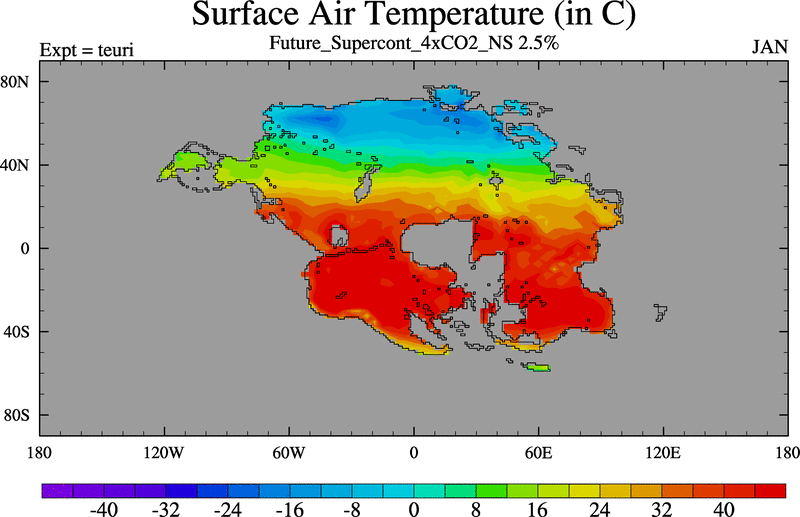https://www.nytimes.com/2023/09/25/scie ... ction.html
If Pangea Ultima behaves like previous supercontinents, it will become studded with volcanoes that belch carbon dioxide, the model found. Thanks to the turbulent movements of molten rock deep in the Earth, the volcanoes may release vast surges of carbon dioxide for thousands of years — blasts of greenhouse gases that will make temperatures rocket up.
https://www.theguardian.com/science/202 ... y-predictsOn Pangea Ultima, Dr. Farnsworth and his colleagues concluded, things will probably get far worse for mammals like us. The researchers found that almost all of Pangea Ultima could easily become too hot for any mammal to survive. They might disappear in a mass extinction.
Dr. Farnsworth granted that a few mammals might eke out an existence in refuges on the fringes of Pangea Ultima. “Some areas in the northern and southern peripheries could be survivable,” he said.
Even so, he was confident that mammals would lose the dominance they’ve enjoyed for the past 65 million years. They might be replaced by coldblooded reptiles that could tolerate the heat.
https://www.cnn.com/2023/09/26/world/su ... index.htmlThe mass extinction would be caused primarily by heat stress as a result of greater volcanic activity that would put twice as much carbon dioxide into the atmosphere as current levels, an older sun that would emit more radiation and the extent of inland deserts in the tropics.
Information from https://www.bilibili.com/video/BV1qb411a7tu/ starting at around the 35 minute mark:While there are large uncertainties when making predictions so far into the future, the scientists said that the picture appears “very bleak,” with only around 8% to 16% of land on the supercontinent habitable for mammals.
- When the subduction zones drive the continents together, the result is more volcanic activity.
- Once a supercontinent forms, subduction stops, effectively capping the volcanoes. But heat and pressure from the mantle continue to rise.
- This will lead to massive eruptions like the Siberian Traps, which caused the worst mass extinction in the history of the Earth, the Permian-Triassic extinction.
https://arxiv.org/pdf/1310.4841.pdf
Increased competition between species due to the merging of continental landmasses and the possibility of increased volcanic emissions from deep mantle superplumes, combined with generally less hospitable conditions on the warming Earth could lead to a mass extinction event for plants and animals from which they may not be able to recover.

This prediction could also be combined with a prediction about hypercanes as well as reptiles replacing mammals as the largest land animals.


